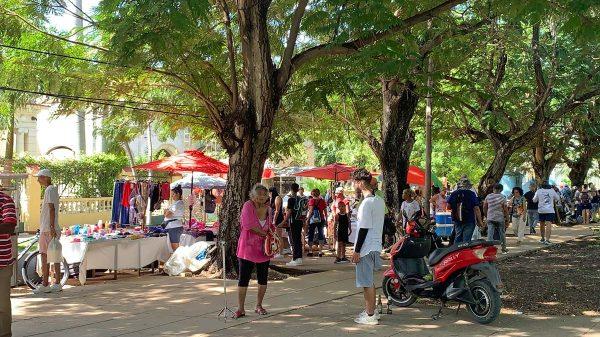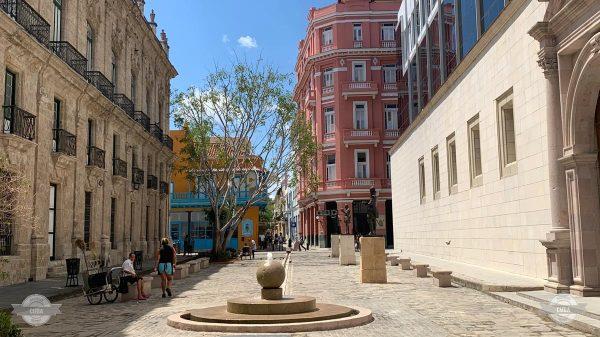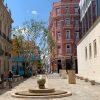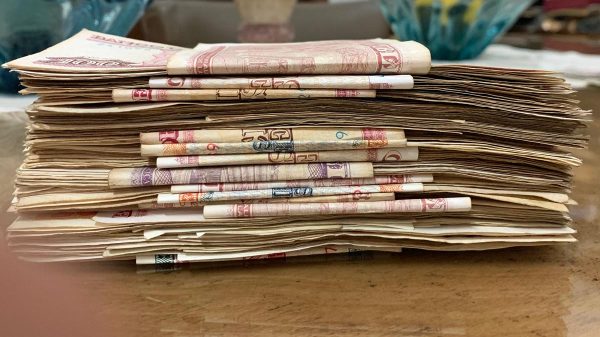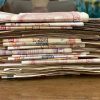Since 2019, Cuba has suffered through Covid shutdowns, anti-government protests, loss of tourism, monetary dislocation, and a developing new economic structure that is creating problematic social class differences. All this is under the increased hostility from the United States and its unjust designation of Cuba as a state sponsor of terrorism. It is yet another serious set of challenges the revolution is facing, even if these ones are distinctly different.
As usual, much of the focus of Cuba’s post-Covid realities is centered on Havana. While it is not difficult to discover the shortages in food, gasoline, and medicines the average citizen faces, there is at the same time a sense of cautious economic revitalization. Most of the optimism is concentrated on the establishment of a private economy sector based on traditional revolutionary survival responses—that of necessity.
Where six months ago there were severe shortages of beer, even in the tourist resorts, a recent trip to Havana saw the city awash in the beverage. The difference is that dozens of non-state enterprises are now importing the suds, providing hotels, government stores and the increased numbers of small shops in private houses with plenty of internationally made beer. The government is encouraging this importation through private hands, acknowledging its lack of resources to manufacture the product. Limited amounts of national beer are available, at usually much higher prices.
Besides beer, the small, medium and large businesses recently legalized by the government are bringing in a wide variety of consumer goods, including furniture, electric motorcycles, tools and construction equipment, clothing, food, and many more items unavailable at state-run outlets. There are more than enough Cubans able to purchase the products, as a new middle class and nouveau riche is emerging with money to spend on these goods, as well as at the high-priced private restaurants and casa particulars.
This new economic reality, however, is creating a serious split in social standing, with an increasing minority of Cubans with strong purchasing power, based on the results of the private sector economy. Those who remain on state salaries or pensions are suffering severe economic difficulties. It is a situation the state has to address.
As a top-ranked official said: “Private importers of beer are solving a problem now, but when the state starts manufacturing, then the prices will stabilize and importers will import other things. The biggest problem is the increases in prices have outpaced state salaries and pensions. And the monetary reunification has created problems.”
After years of deliberation, Cuba decided just before Covid hit to eliminate the tourist dollar known as the Chavito and re-peg the Cuban peso to the US dollar. The result was an exchange rate of 24 pesos to one dollar. The official rate is now 120 pesos, and getting a street exchange of 180 pesos per dollar is easy. Almost everything is much more expensive due to import costs and the devalued peso. Despite the government raising salaries across the board, costs have far exceeded income, particularly for food, where a dozen eggs can often cost more than a month’s salary.
So, the good news is there is an abundance of consumer goods to buy for Cubans with money. The bad news is that a majority struggle to afford these goods. It is a neo-liberal economy conundrum that the revolution never thought it would have to face.
Exacerbating the situation are shortages of gasoline and medicine. Cuba’s foreign partners are having problems supplying gas; Cuba is having problems with getting raw materials to sustain their medicine manufacturing industry.
A confusing new element to all these changes is the rule that only credit cards can be used for state-run tourist facilities. Cash, whether in national or international currency, is not accepted. It is a system that is dis-incentivizing tourism, particularly American travelers and is a complication for no reason. But in typical Cuban fashion, solutions are always available—as when a bartender at the Hotel Nacional accepted payment for a beer in Cuban pesos, with a wink and a shrug acknowledging even the locals don’t understand the logic of the system. And if you want to purchase a hand-rolled cigar in the lobby—then cash is still king. Tourists can use official bank cards to deposit national or international currency, but information is not readily available at airports and travelers are hesitant to use the unclear system.
Making these challenges harder to overcome is the unrelenting pressure of the US embargo, made worse now with Washington’s refusal to remove Cuba from the list of states that sponsor terrorism. The listing infuriates officials as they point to the history of terrorism against Cuban civilians by US-based anti-revolutionary groups, which has cost the lives of thousands since the early 1960s. Trading with Cuba has become even more tenuous thanks to America’s continued hostility, unabated under President Biden. Despite current political efforts to reduce or even end the embargo, the intransigent anti-revolutionary members of Congress continue to claim the economic punishments are aimed at the government, disingenuously ignoring the real harm it does to the average citizen, which is who the embargo has been aimed at for the past 60 years.
Fortunately, tourism is making a slow comeback, with over a million visitors to date, still a long way off from the 4.5 million in 2019. Canadians are returning to pre-covid levels to Varadero, and shortages in the resorts seem to be resolved for the most part.
Other aspects of a new Cuba are the continued intention of de-centralization, as individual provinces are being given more autonomy to determine and resolve specific economic issues, a more workable solution than complete control from Havana that often didn’t recognize the various challenges one area faces over another. In early May, President Miguel Diaz-Canel toured western provinces to assess what is necessary to overcome decreasing agricultural production. The president stressed the need to make structural changes and eliminate obstacles that prevent sustainable food production. “We have to do things differently, with other concepts,” he commented.
In a political move with potential economic impact, last week Havana announced the increase in passport validity to 10 years, reduced the cost and eliminated the necessity to pay for an extension every two years. The measures are designed to make it easier for Cubans residing outside the country to return for tourist visits and/or to help family, calculating the economic benefits will outweigh the loss in passport and extension revenue.
Cuba is going through yet another challenge to its economy and society. The revolution is evolving with the establishment of a permanent state/private economic mixture. How Cuba resolves the current complications of economic class differences while remaining committed to private enterprise and development will be closely examined over the next few years.

Keith Bolender is a freelance journalist living in Toronto and has written extensively on Cuban matters for the past 25 years for a variety of North American publications, including the Toronto Star, The Guardian, Florida Sun Sentinel, the Council for Hemispheric Affairs, North American Council on Latin America, Monthly Review, Progresso Weekly and others. He is a member of the Institute for Public Accuracy (IPA) on their roster of experts for Cuban Affairs. Instructor on the Cuban Revolution at the University of Toronto School of Continuing Education. Bolender has lectured on Cuba throughout North America and the United Kingdom including at the United Nations in New York and the Scottish National Parliament. He has participated on various Cuban panels at a variety of international conferences including the Left Forum conference in New York, and at the University of Nottingham, Cuban conference in London England 2015, Che Guevara conference in Vancouver among others. Bolender has been interviewed about Cuba on national and local radio and television programs in Canada, US, United Kingdom.
He has written three books on Cuba. The first is an examination of the unknown war of terror against Cuba – Voices From the Other Side: An Oral History of Terrorism Against Cuba. Published 2012 by Pluto Press (London, England), the book is the first ever collection of interviews with dozens of Cubans across the island who have suffered directly from these acts or have had friends or relatives killed. The Spanish language version of the book was published in Cuba and presented to Fidel Castro at the Havana Book Fair in 2011.
Bolender’s second book was published December 2012 by Palgrave/MacMillan (New York). Cuba Under Siege: American Policy, the Revolution and Its People examines the effect of more than 50 years of America’s unrelenting hostility to the Cuban Revolution has had on the development of a siege mentality among island leadership and ordinary citizens. The siege has affected politics, economics, culture and nearly all aspects of everyday Cuban life, including the radicalization of internal policies and international relationships.
His third book came out September 2019 by Pluto Press (London). Manufacturing the Enemy: the Media War Against Cuba examines how the international mainstream media has consistently misrepresented and misinformed the general public about the Cuban Revolution and the country’s social/economic system, helping to sustain United States mostly negative perspective of Cuba and its resulting harmful effects on Cuba’s standing in the world and its perception among the international community.
Author’s Page: https://www.plutobooks.com/author/keith-bolender/







